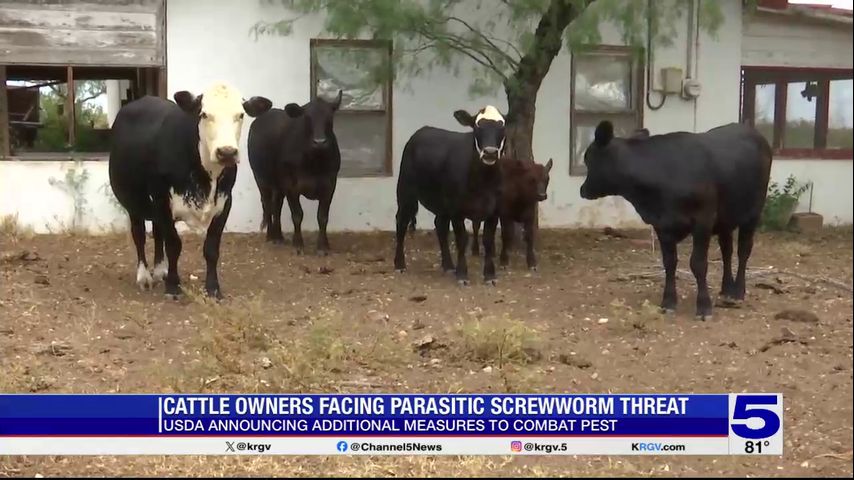Valley cattle owners facing parasitic screwworm threat
Screwworm is basically a type of fly that can cause major damage to cattle, and that's bad news for ranchers and beef prices.
In June, a plan was announced to turn an old air base in Edinburg into a sterile fly production facility. The goal is stopping the screwworm from infecting Texas cattle.
Jackie Ramirez takes to his ranch north of Rio Grande City. Taking care of cattle is part of his family's legacy, but it's a pricey one.
"The cost of even just buying a 500 pound heifer is well over $1,500," Ramirez said.
He tries to keep pest away using a special mixture of molasses. He says certain flies carry a parasite that could kill his cattle.
As previously reported, the new world screwworm was reported less than 400 miles south of the Rio Grande Valley in Mexico.
RELATED STORY: Facility in Hidalgo County will help combat screwworm outbreak in Mexico, USDA says
"The threat is real and the time to act is now," United States Department of Agriculture Secretary Brooke Rollins said.
Rollins held a news conference with Texas Governor Greg Abbott at the state capitol to announce additional measures to keep the dangerous pest away.
"First today, we are announcing the USDA will invest and build a domestic sterile fly production facility in Edinburg, Texas," Rollins said.
This is on top of the $20 million being spent to renovate an existing fly production facility in southern Mexico and a USDA facility at Moore Air Base in Edinburg.
Governor Abbott expressed concerned on what the parasite could do.
"It's going to lead to a dramatic spike increase in what people are paying in groceries," Abbott said.
Rollins didn't say exactly where in Edinburg the new facility will be, but she said it will complement the dispersal facility where production has already started.
The new facility will be able to produce 300 sterile screwworm flies a week. Those sterile flies will breed with current flies to kill off the population.
"This facility will triple our current output and eliminate our sole reliance on Panama and Mexico," Rollins said.
In the 1950s and 60s, the United States worked with Mexico and Panama to push the Screwworm down south and eradicated the disease.
Ranchers like Ramirez remember.
"I was probably 10 years old in the 70s, where my dad was actually treating one of his mares that he told me had screwworm," Ramirez said.
Now, he faces the same pest inching closer to the border.
Watch the video above for the full story.





